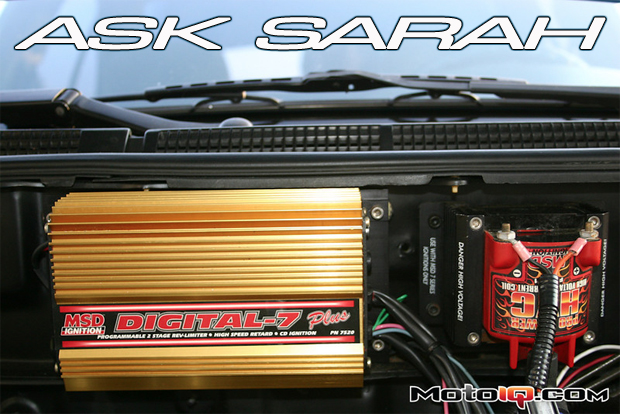,
Sarah,
Through out many of the MotoIQ articles, anytime a cooling system is featured the need for a swirl pot/surge tank is always mentioned. I searched MotoIQ and the internet without any luck of finding any in depth information on how to setup a surge tank and/or swirl pot properly. Could you provide any information on what to consider when setting up a proper cooling system? It would be especially appreciated if there was some information for do-it-yourselfers on how to build their own swirl pots and/or surge tanks.
Thanks, Andrew
Air has a specific heat value of 1.01 while water has a specific heat value of 4.18. Simply put, water can absorb 4 times as much heat as air. That's why air bubbles in your cooling system won't be as efficient at keeping temps down as a properly bled system. When coolant heats up, it expands and as the coolant temp goes back down, it contracts.
 |
| This is a picture of Tanner Foust's Rockstar Scion Formula D drifting monster. Race cars use swirl pot/surge tanks to keep the coolant deaerated. |
Typically, the highest point on the cooling system of a factory car is in a heater hose. An advantage of a surge tank and/or swirl pot is found by locating a pressure cap at the highest point in the cooling system (and higher than the engine) where it will be the most effective at bleeding air bubbles. It provides additional space for the coolant to go when it expands and becomes a convenient place for checking, filling, or bleeding the cooling system. It also prevents pressure surges due to the increased water pump speed as well as the volume of coolant circulating in the system from unseating the radiator cap, causing coolant to leak. The hose that feeds the surge tank or swirl pot should be horizontal to or rising from the cylinder head; a downward feed may trap pockets of air or steam.
A coolant surge tank is basically a remote reservoir for the radiator. It purges air bubbles and provides an empty space for expanding coolant to go. A coolant swirl pot is often used on race cars. It has spiral internal baffling to more efficiently separate the coolant and air before it tees back to the lower radiator hose and into the water pump inlet. The intake tube on a swirl pot is offset from the pot's center to induce a “whirlpool” effect. The air will collect in the middle and rise to the top, exiting from the bleeder valve. It's a little redundant to have both a surge tank and a swirl pot as a swirl pot can function as both, but some race cars that have difficulty purging air bubbles may use a complicated setup with both components.
One of our many amazing MotoIQ readers RallyBob wrote a fantastic writeup about installing a DIY surge tank and swirl pot. His kickass welding skills and fabrication work resulted in an incredible drop in water temps. Just be careful you aren't overly efficient at lowering temps- it is possible to cool the engine too much.
 |
| 'Scuse my sloppy Paint diagram work. This is a simple surge tank setup. |



